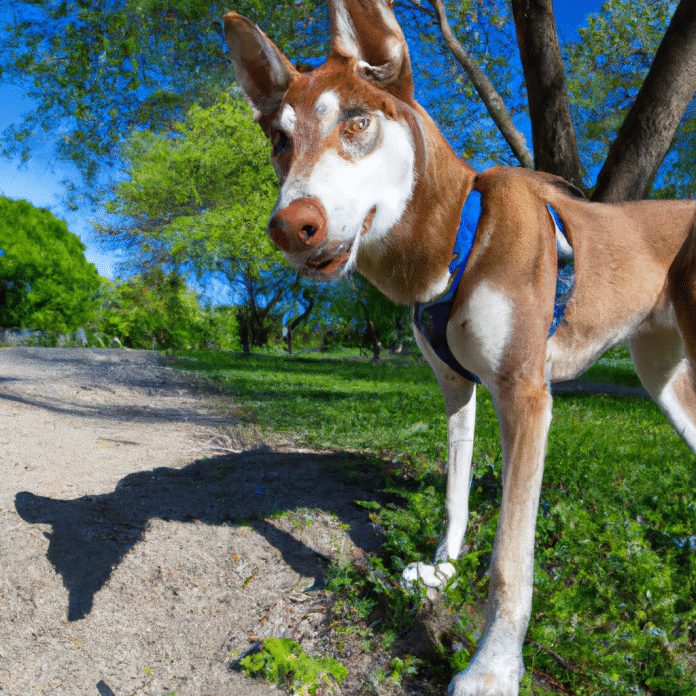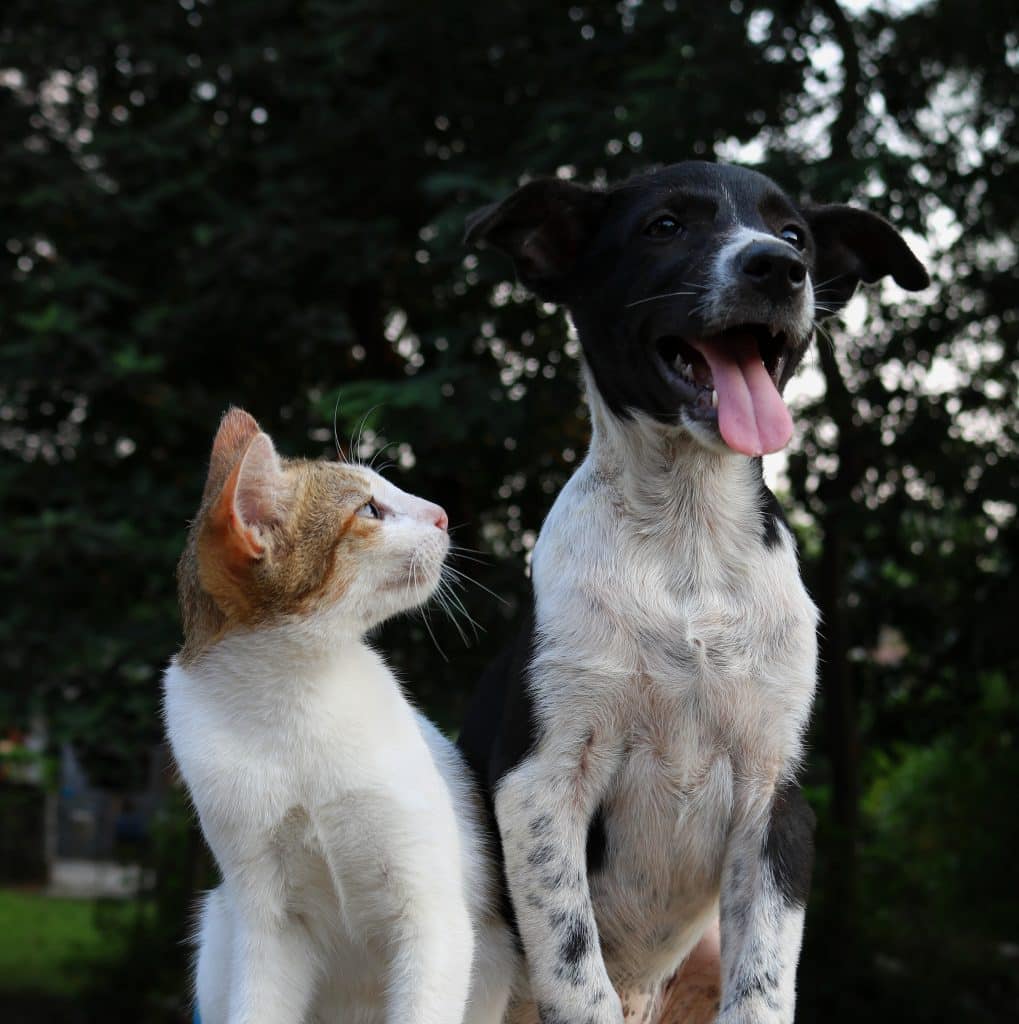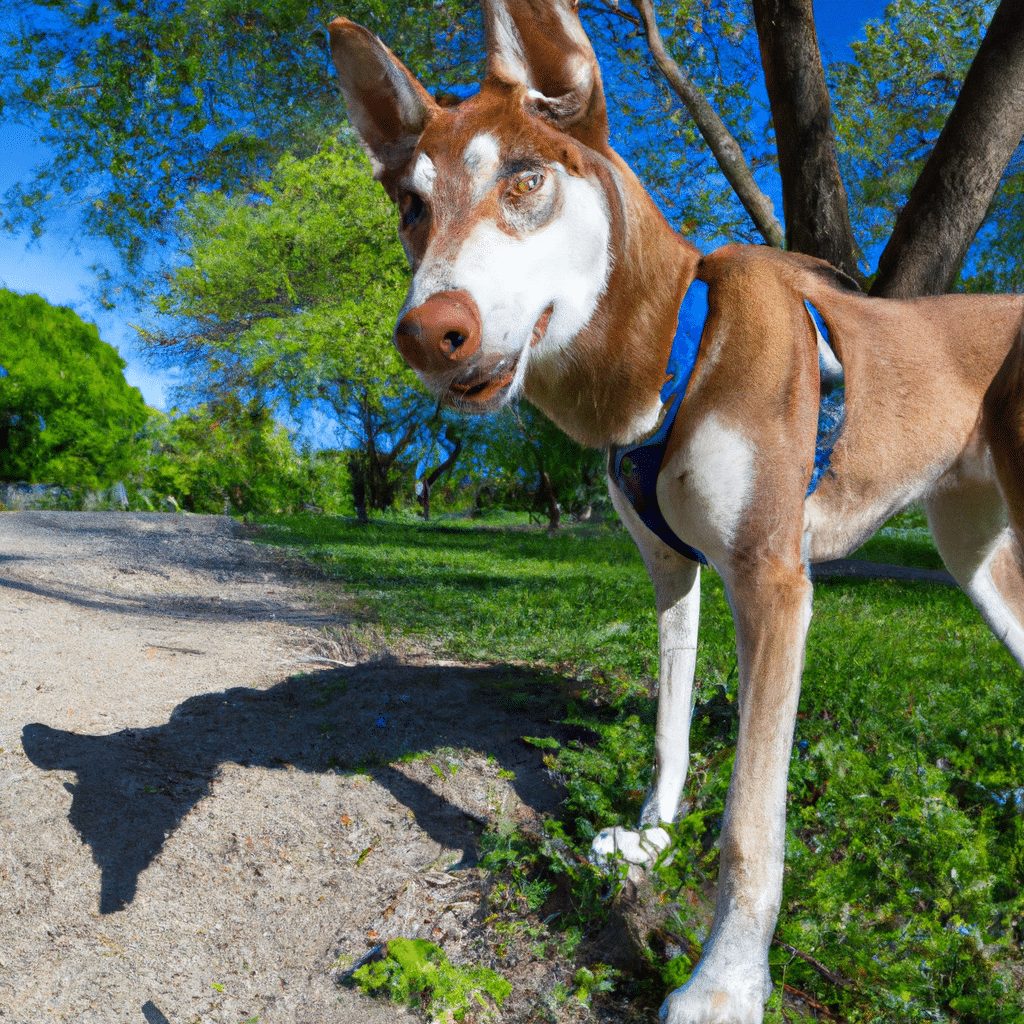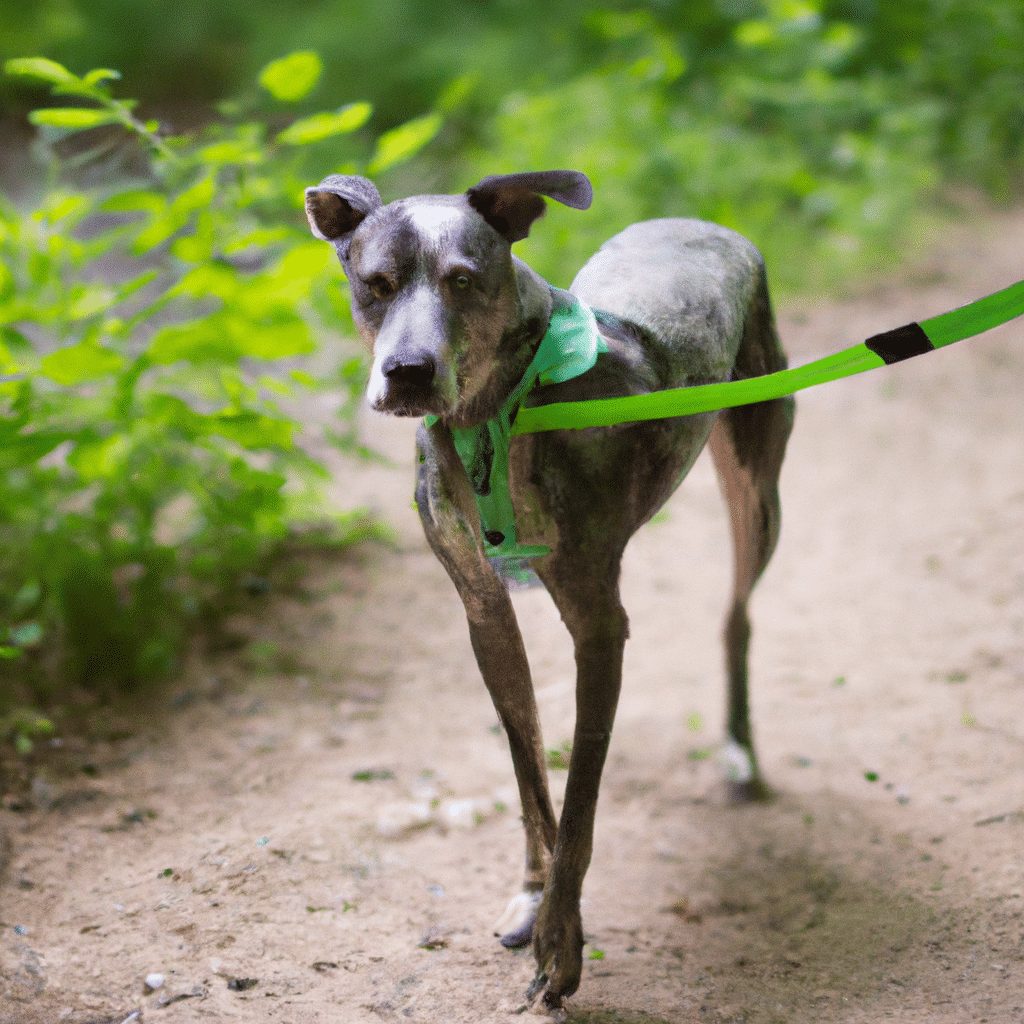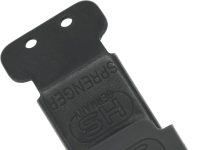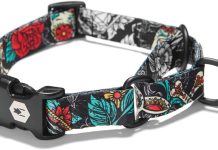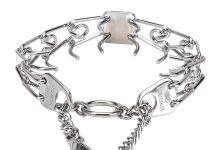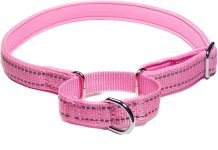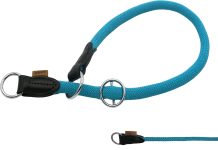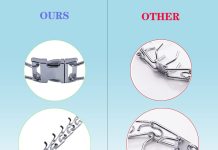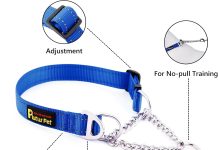We know how much joy and love our furry friends bring into our lives, and keeping them safe and secure is always a top priority. One common question that many pet owners ask is, “Does my dog need a collar if he has a harness?”
In this article, we will explore the benefits of both collars and harnesses and provide you with all the information you need to make an informed decision to ensure your beloved pup’s safety and comfort. So, let’s put on our detective hats and dig into this puzzling question together!
Why use a harness?
Table of Contents
Provides better control
Using a harness can provide better control over your dog, especially if they tend to pull on walks. Unlike a collar, which puts pressure on the neck, a harness distributes the force across the chest and back, making it easier to guide and manage your furry friend.
Reduces strain on the neck
One of the main advantages of using a harness is that it reduces strain on the neck. Collars can pressure your dog’s sensitive throat, particularly if they lunge or pull. Using a harness can minimize the risk of injury to their neck and throat, promoting their overall comfort and well-being.
Supports dogs with respiratory issues
Certain dog breeds, such as Bulldogs and Pugs, are prone to respiratory issues. These dogs often have shorter snouts and narrower airways, making them more susceptible to breathing difficulties. A harness, particularly a front-clip one, can help alleviate pressure on their neck and chest, allowing them to breathe more easily while walking or engaging in activities.
Prevents injuries
Harnesses are designed to distribute pressure evenly across your dog’s body, minimizing the risk of injuries. A collar alone may not provide sufficient control for dogs that tend to pull or have a lot of energy. Using a harness reduces the likelihood of strain, sprains, or other injuries that may occur during walks or training sessions.
The purpose of a collar
Identification purposes
Collars are often used as a means of identification. Attaching ID tags or engraved plates to a collar ensures your dog can be easily identified if they get lost. This is particularly important if your dog accidentally wanders away or escapes your home.
Safety during walks
Collars, especially those equipped with reflective materials or LED lights, can enhance the visibility of your dog during walks, especially in low-light conditions. They make it easier for motorists, cyclists, and pedestrians to spot your dog, reducing the risk of accidents or collisions.
Training tool
Collars can also serve as an aid in training your dog. They can teach basic commands, such as “sit” or “stay,” and correct unwanted behaviors, like jumping or excessive barking. With the proper training techniques and positive reinforcement, collars can be an effective tool in shaping your dog’s behavior.
This image is the property of images.unsplash.com.
Potential drawbacks of using only a harness
Limited visibility
One potential drawback of using only a harness is that it may not provide the same level of visibility as a collar, particularly in low-light conditions. Without additional reflective elements or lights, it may be more difficult for others to spot your dog, posing a safety risk.
Difficulties in leash attachment
Some harnesses may have multiple attachment points, which can be confusing or difficult to use, especially if you are in a hurry or have limited dexterity. In contrast, collars typically have a straightforward leash attachment point, making it easier to secure and detach the leash quickly.
Inadequate identification
Unlike a collar, a harness may not provide a prominent location for attaching identification tags or engraved plates. This can be a concern if your dog gets lost, as it may be more challenging for someone to identify and return them to you without readily available contact information.
Escaping incidents
While harnesses are excellent at controlling and reducing strain, some dogs may still find ways to escape them. Whether due to sizing issues, Houdini-like skills, or slipping out of improperly secured harnesses, there is a slight possibility of your dog managing to escape if solely reliant on a harness.
Benefits of combining collar and harness
Added visibility
Combining a collar with a harness can enhance your dog’s visibility during walks or outdoor activities. Whether attaching reflective elements to the collar or using a collar with built-in LED lights, you can significantly improve others’ ability to see your dog, minimizing the chances of accidents or getting lost.
Multiple leash attachment points
Using both a collar and a harness allows for multiple leash attachment points. This flexibility can be beneficial in various situations, such as when walking multiple dogs or when you need to control your dog more effectively, such as during training sessions or in high-traffic areas.
Enhanced identification
A collar is an ideal place for attaching identification tags or engraved plates. By combining a collar with a harness, you can ensure that your dog is easily identifiable, even if they manage to escape from the harness. This additional identification layer can increase the chances of a safe and swift return if your dog goes missing.
Prevention of escaping
While harnesses offer excellent control, adding a collar as a secondary measure can further prevent your dog from escaping. With a collar and a harness, you can reduce the risk of accidental slips or Houdini-like maneuvers, providing peace of mind during walks or outdoor adventures.
Training flexibility
A collar and a harness allow you to adjust your training techniques depending on the situation. You can use the collar for basic commands, corrections, and quick behavioral adjustments while relying on the harness for better control and reduced strain during walks or other physical activities.
This image is the property of images.unsplash.com.
Different types of harnesses
Back-clip harnesses
Back-clip harnesses are commonly used and have the leash attachment point on the dog’s back. They are relatively easy to wear and comfortably fit many dogs. However, they may not be suitable for dogs that tend to pull, as the harness design may inadvertently encourage pulling behavior.
Front-clip harnesses
Front-clip harnesses have the leash attachment point at the front, typically in the chest area. This design helps to redirect your dog’s attention back towards you during walks, discouraging pulling behavior. Front-clip harnesses can provide better control over over-enthusiastic pullers and are often recommended for dogs that require additional guidance during walks.
Dual-clip harnesses
Dual-clip harnesses offer the flexibility of both front and back attachment points. Depending on your specific needs and your dog’s behavior, you can choose between attaching the leash to the front or back. These versatile and adaptable harnesses make them suitable for a wide range of dogs.
No-pull harnesses
No-pull harnesses are specifically designed to discourage pulling. They typically feature a front-clip design combined with features that gently guide your dog back towards you when they pull. These harnesses can be practical tools for teaching dogs proper leash manners and reducing the strain on you and your dog during walks.
Step-in harnesses
Step-in harnesses are easy to put on and require your dog to step into the harness, eliminating the need to go over their head or manipulate their legs. They are handy for dogs who are sensitive about having items pulled over their heads or have limited mobility. Step-in harnesses provide great comfort and security for your dog during outings.
Choosing the right collar
Flat collars
Flat collars are the most common type of collar. They are simple, adjustable, and easy to put on and remove. Flat collars are suitable for most dogs and are commonly used for identification. However, they are not recommended for dogs that tend to pull or have specific health issues, as they can strain the neck when pressure is applied.
Martingale collars
Martingale collars are designed to prevent dogs from slipping out of their collars while ensuring comfort. They consist of a loop that tightens when the dog pulls but loosens when there is no tension on the leash. Martingale collars are particularly suitable for dogs with narrow heads or those prone to slipping out of regular flat collars.
Prong collars
Prong collars, or pinch collars, consist of metal prongs that apply pressure evenly around a dog’s neck when they pull. They are considered controversial and are often not recommended as first-choice collars. Prong collars should only be used under the guidance of a professional dog trainer or behaviorist.
Head collars
Head collars like the Gentle Leader or Halti are designed to fit over your dog’s muzzle and behind their ears. They give you control over your dog’s head, which helps redirect their pulling behavior and makes it easier for you to guide them. Head collars are valuable tools for dogs that require additional control during walks or need help with leash manners.
This image is the property of images.unsplash.com.
Important considerations
Dog’s behavior and training level
When choosing between a collar and a harness, it’s essential to consider your dog’s behavior and training level. If your dog tends to pull, a harness can provide better control and reduce strain on their neck. Collars are generally suitable for dogs with good leash manners and minimal pulling behavior.
Neck size and breed
Certain dog breeds, such as Greyhounds or Whippets, have long, slender necks, making them more prone to injuries from collar pressure. In such cases, harnesses may be a better choice to distribute pressure evenly across their bodies. Additionally, dogs with thick or double coats may find collars less comfortable due to matting or irritation.
Specific health concerns
If your dog has specific health concerns, such as neck or spinal issues, a harness may be more suitable than a collar. Harnesses can alleviate strain on the neck and distribute pressure more evenly, reducing the risk of exacerbating existing conditions. It’s always best to consult your veterinarian for personalized advice based on your dog’s needs.
Combining collar and harness for specific situations
Walking in busy areas
When walking in busy areas, using a collar and a harness is advantageous. The collar provides visibility and identification, while the harness offers better control and reduces strain. This combination makes your dog visible to others and allows you to guide them effectively amidst distractions and potential dangers.
Off-leash activities
A collar is still necessary even if your dog is wearing a harness during off-leash activities, such as at a dog park or in a secure, fenced area. The collar serves as a backup means of identification in case your dog manages to slip out of the harness. It’s essential to keep your dog’s identification tags or plates securely attached to their collar for easy identification.
Training sessions
It’s beneficial to have both a collar and a harness for training sessions. The collar can be used for quick corrections or redirection, while the harness provides better control over your dog’s movements. This combination allows you to effectively reinforce training commands while minimizing strain or injury risk during training exercises.
Traveling and identification
When traveling with your dog, it’s crucial to have identification readily accessible. While a harness may be your preferred option for walks or activities at your destination, a collar should always be worn during transit. In case of any unforeseen events or escapes during travel, the collar provides a visible means of identification for your furry companion’s safety.
Transitioning from collar to harness
Gradual introduction
If your dog has primarily worn a collar and you are transitioning to a harness, it’s essential to introduce it gradually. Start by having your dog wear the harness indoors for short periods, allowing them to adjust and become comfortable with the new sensation. Gradually increase the time and eventually transition to using the harness during walks or other activities.
Positive reinforcement
Use positive reinforcement techniques to associate wearing the harness with positive experiences during the transition. Offer treats, praise, or playtime while your dog wears the harness to create a positive association. This will help them view the harness as a beneficial and enjoyable accessory rather than something to be feared or resisted.
Seeking professional guidance
If you encounter difficulties during the transition or have concerns about using a harness, it’s always best to seek professional guidance. A dog trainer or behaviorist can provide personalized advice based on your dog’s needs and behavior. They can assist you in selecting the proper harness and collar and guide you through the transition process.
Conclusion
Assessing your dog’s needs is crucial when deciding whether to use a collar, harness, or combination. While harnesses provide better control, reduce strain on the neck, and support dogs with respiratory issues, collars serve identification purposes, enhance visibility, and can be helpful to training tools. By combining a collar and a harness, you can enjoy added visibility, multiple leash attachment points, enhanced identification, prevention of escaping incidents, and training flexibility.
Choosing the proper harness and collar depends on your dog’s behavior and training level, neck size and breed, and specific health concerns. Combining a collar and a harness is suitable for various situations and provides safety, comfort, and control for your beloved canine companion.

